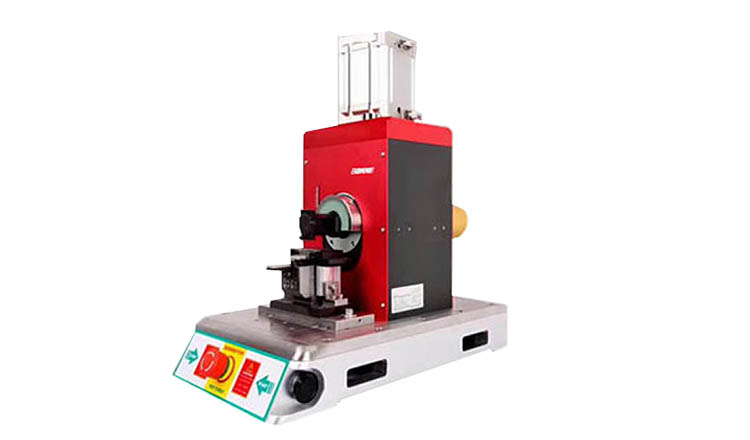Plastic welding has permeated various parts processing within the industrial sector, and
the production of everyday consumer goods relies heavily on plastic welding technology.
Plastic welding is one of the primary methods for secondary processing of thermoplastic
plastics. It takes advantage of the fact that thermoplastic plastics can be melted, using heat
to simultaneously melt the surfaces of two plastic components. Under external force, these
components are joined together, forming a weld. Depending on the heating method used,
plastic welding can be categorized into methods such as hot plate welding, induction welding,
friction welding, ultrasonic welding, high-frequency welding, and hot air welding.

Plastic Welding Manufacturers: Hot Plate Welding
Hot plate welding involves using a heating tool, such as a hot plate, heated strip,
or heated soldering iron, to directly heat the surfaces of two plastic parts being
joined. The heating continues until there is a sufficient molten layer on the surfaces.
The heating tool is then removed, and the two surfaces are pressed together until
the molten portion cools and solidifies. This process of connecting two plastic parts
is known as hot plate welding. It is suitable for welding products made of materials
such as acrylic, rigid PVC, flexible PVC, high-density polyethylene, polytetrafluoroethylene,
polycarbonate, polypropylene, and polyethylene. Currently, this process is commonly
used for PP-R fittings and other connections.
Plastic Welding Manufacturers: High-Frequency Induction Welding
In high-frequency induction welding, metal inserts are placed on the surface of the
plastic weld seam and temporarily bonded under appropriate pressure. The assembly
is then placed in an alternating magnetic field, which induces heat in the metal insert,
causing the plastic to melt and bond. After cooling, the welded product is obtained.
This welding method is referred to as dielectric welding and is applicable to almost all
thermoplastic plastic welding.
Plastic Welding Manufacturers: Ultrasonic Welding
Ultrasonic welding is also a form of heat welding. Heat is generated by using ultrasonic
vibrations to mechanically agitate the plastic. When ultrasonic vibrations are directed
onto the plastic surfaces to be welded, the plastic particles are stimulated by the ultrasonic
waves and vibrate rapidly, generating mechanical agitation. Through this conversion to
heat, the temperature of the welded plastic surface increases and melts, while the
temperature of the unwelded surface remains unaffected. Ultrasonic energy is introduced
into the welding plastic through the welding joint. When the ultrasonic welding stops, the
plastic immediately cools and solidifies. Depending on the structure of the ultrasonic
welding machine, various thermoplastic plastics can be welded.
Plastic Welding Manufacturers: High-Frequency Welding
Two overlapping plastics are placed between two electrodes, and the electrodes are subjected
to high-frequency current. Under the influence of the electromagnetic field, the free charges
in the plastic repeatedly and naturally move (polarize) at the same frequency (but slightly lag
behind), causing the polarized molecules to vibrate frequently and generate friction until
electric fusion occurs. It is suitable for plastics composed of polar molecules, such as films or
sheets made of PVC and polyamide.
Plastic Welding Manufacturers: Friction Welding
The frictional heat generated between thermoplastic plastics can melt the friction surface,
which then solidifies through cooling under pressure. This is known as friction welding. This
method is suitable for cylindrical products.
Plastic Welding Manufacturers: Hot Air Welding
Hot air welding is easy to use and operationally straightforward, particularly suitable for welding
plastic sheets. The process involves heating compressed air (or inert gas) to the temperature
required for welding the plastic using a welding torch heater. Then, the welding rod and filler
material are heated to a molten state using preheated gas, and the weld seam is secured together
under slight pressure.
Plastic Welding Manufacturers: Laser Plastic Welding
Laser welding seems to have developed into a welding method particularly suitable for specific
applications, offering cost and performance advantages compared to other methods such as
ultrasonic welding, vibration welding, and hot plate welding.
A major advantage of laser welding is its ability to heat plastic components through non-contact
methods, allowing for the plasticization of complex three-dimensional welding surfaces. As a result,
infrared welding techniques are especially suited for complex curved parts and large structural
plastic components.
With the increasing demand for lightweight tools and the rapid development of the plastics industry,
plastic applications in daily life will become more widespread, and various plastic welding methods
will continue to advance. The level of plastic welding technology seems to have become a benchmark
for measuring automotive production technology and new material development. It is certain that
various methods of welding plastics will play an even greater role.
Phone: +86-15989541416
E-mail: michael@sztimeast.com
Whatsapp:+86-15989541416
Add: 3/F, Building 5,Huixin Intelligent Industrial Park, Xinhu, Guangming, Shenzhen,China 518107
We chat
